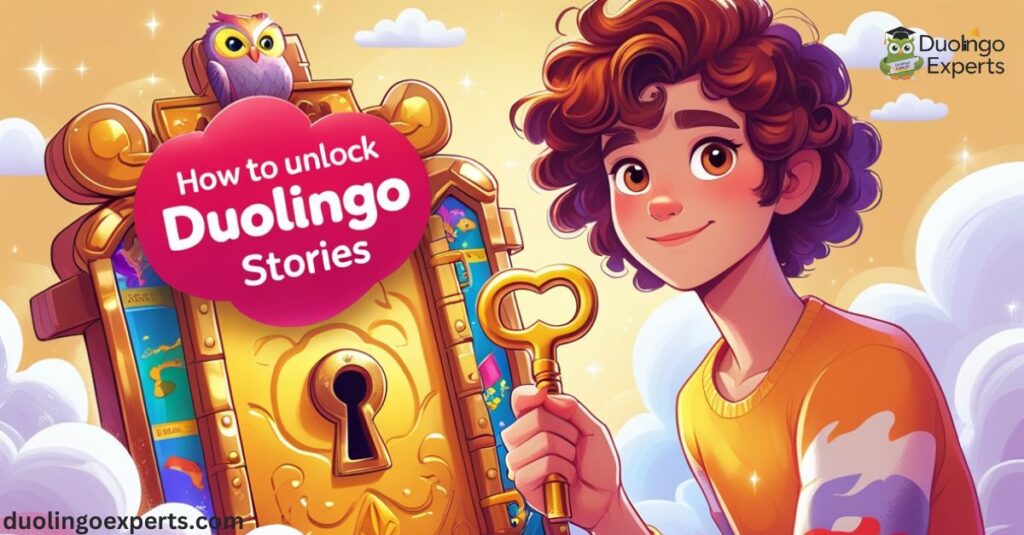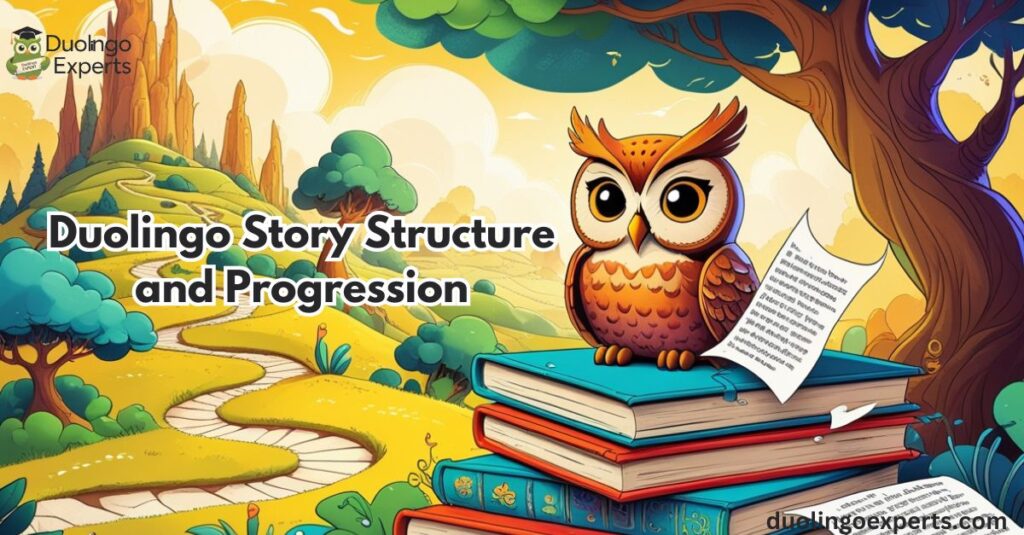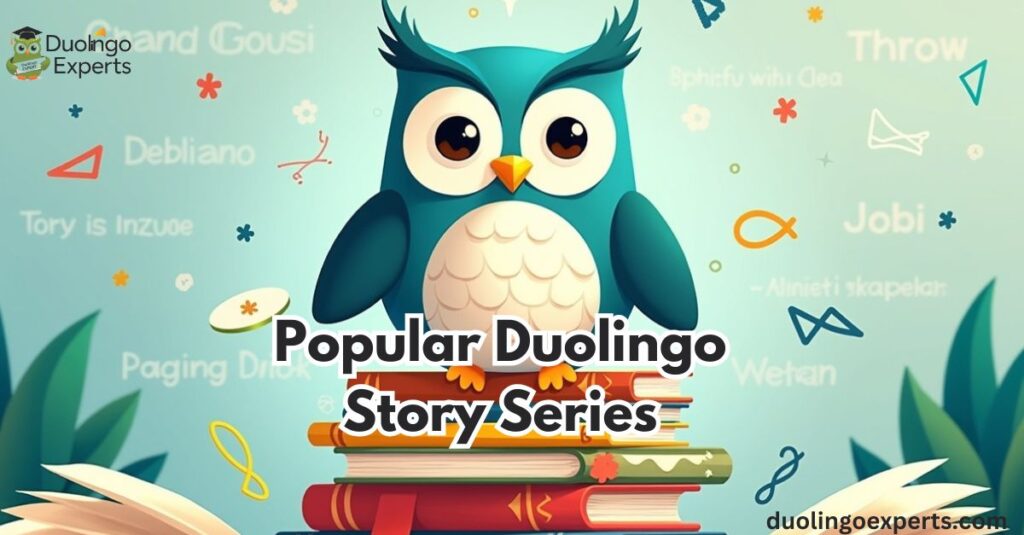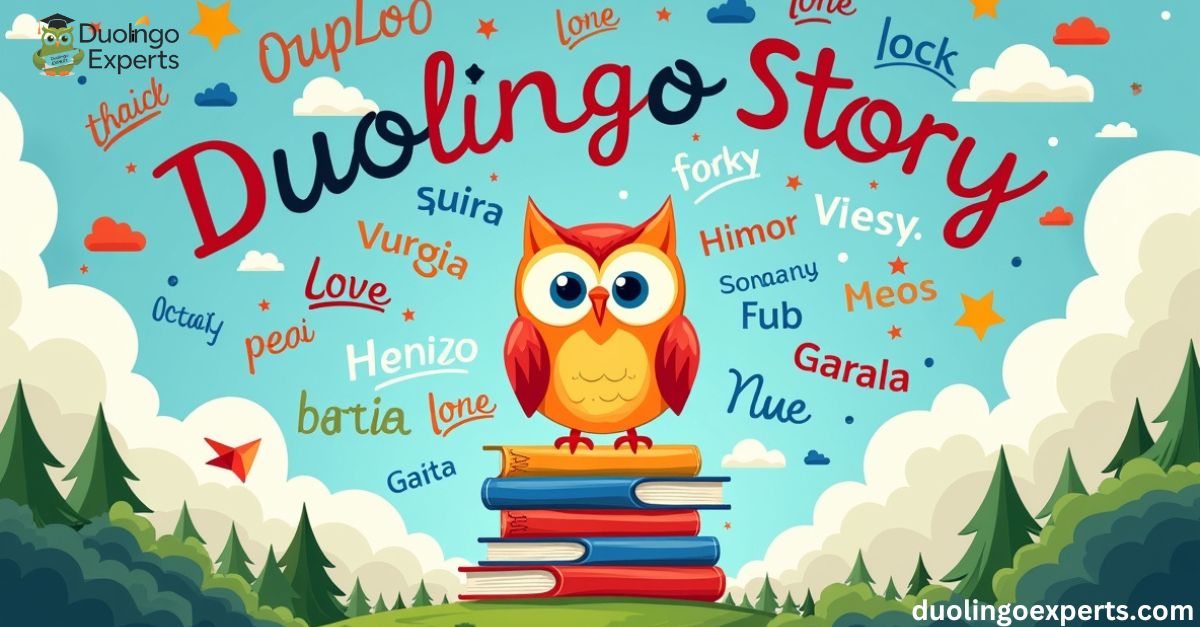Duolingo has become a household name in the world of language learning, known for its interactive, user-friendly approach. One of the standout features that make Duolingo a go-to platform is its Duolingo Story, which provide an innovative way to practice and engage with language through compelling narratives.
In this guide, we will explore everything you need to know about Duolingo Stories from how they work to unlocking them, and how to get the most out of these interactive stories for language success.
What Are Duolingo Stories?
Duolingo Stories are an innovative and engaging way to practice language skills beyond just vocabulary drills or grammar exercises. They are short, interactive, and context-rich narratives that help learners build real-world language skills in an immersive and enjoyable way.
These stories incorporate a combination of reading comprehension, dialogue practice, and contextual learning, designed to reinforce language skills in a natural, conversational way.
Unlike traditional language lessons that may focus on isolated vocabulary or grammar rules, Duolingo Stories allow you to learn by immersing yourself in the language. The stories often feature common language patterns, idiomatic expressions, and everyday dialogues, all while introducing you to the cultural context behind the language.
Key Features of Duolingo Stories:
- Interactive Stories: These stories are interactive in nature, meaning they offer opportunities to engage with characters through comprehension checks, multiple-choice questions, and dialogue completion exercises.
- Story-Based Learning: Through story-based learning, you learn the language in context rather than in isolation. This method enhances your understanding of how words and phrases fit into real conversations.
- Cultural Context: Duolingo Stories aren’t just about learning words they also immerse you in the cultural settings and customs that influence how language is used. This helps learners gain a more complete understanding of the language.
How to Unlock Duolingo Stories

One of the first steps in using Duolingo Stories is knowing how to unlock them. These stories are not available immediately but are unlocked as you progress through the language course. Here’s a step-by-step guide on how to access them:
Steps to Unlock Duolingo Stories:
- Complete Basic Lessons: Duolingo requires you to reach certain milestones in its main course before stories become available. Typically, you will need to complete introductory levels of the language you are learning.
- Use the Duolingo App: You’ll need the Duolingo app, which is available on both iOS and Android. While the desktop version of Duolingo offers a great learning experience, stories are best accessed and enjoyed on the mobile app.
- Achieve Skill Progression: The stories correspond to specific skill levels. You need to have progressed through basic vocabulary and grammar lessons in the language to unlock different levels of stories.
- Duolingo Plus: While Duolingo Stories are generally available for free, Duolingo Plus subscribers might have early or additional access to premium stories or advanced levels. The Plus subscription also removes ads, allowing for uninterrupted learning.
Once unlocked, you will find stories under the “Stories” tab in your Duolingo app. These stories are organized by difficulty level and topic, making it easy to choose the stories that are most relevant to your learning stage.
Duolingo Story Languages and Options
Duolingo has a wide range of languages available, and the Stories feature is growing across multiple language courses. Currently, Duolingo offers multi-language story variations in several languages, making it possible to practice language skills in various contexts.
Languages with Duolingo Stories:
- Spanish
- French
- German
- Italian
- Portuguese
- Dutch
- Norwegian
- Irish
- Japanese
- Korean
- Chinese
Each language offers its own set of stories that cater to different aspects of the language. For instance, while Spanish stories focus on both European and Latin American contexts, Japanese stories offer insights into Japan’s cultural nuances, such as polite speech levels and honorifics.
Special Language Variations:
- Japanese and Korean: Duolingo’s stories in these languages focus heavily on pronunciation practice, with emphasis on different character sets (hiragana, katakana, kanji for Japanese; hangul for Korean) and honorific forms of speech.
- French and Spanish: These stories offer practical, everyday conversations such as ordering food, traveling, or interacting in professional environments.
By selecting the appropriate language, you can ensure you are building a foundation for both grammar and vocabulary while enjoying the stories that reflect the culture and lifestyle of the target language.
Story-Based Learning Advantages
Story-based learning offers numerous advantages for those looking to strengthen their language skills. Unlike rote memorization, which can often feel tedious, Duolingo Stories offer a dynamic and engaging way to retain knowledge. Here’s why story-based learning is so effective:
1. Vocabulary Acquisition in Context
One of the biggest advantages of context-based learning through stories is that vocabulary is introduced and reinforced in real-life scenarios. For example, you’ll learn how to use words like “grocery shopping,” “vacation,” or “doctor’s appointment” not just in isolation but within actual conversations.
This approach helps learners make connections between words and their meanings in the context of day-to-day life.
2. Improved Reading Comprehension
Each story in Duolingo includes comprehension checks to test your understanding of the material. These assessments range from multiple-choice questions to fill-in-the-blank exercises that evaluate how well you’ve grasped the storyline. This process of reading and then responding to questions helps improve reading comprehension, which is a critical skill for becoming fluent in any language.
3. Cultural Relevance
Learning a language isn’t just about words it’s about how those words are used in different cultural contexts. Duolingo Stories include cultural references, idiomatic expressions, and regional dialects that help you understand how language functions in the real world.
This cultural context integration is one of the features that set Duolingo apart from many other language learning tools.
4. Grammar in Context
Rather than simply memorizing grammar rules, Duolingo Stories introduce grammar in the flow of conversation. You’ll come across common language patterns as you interact with the characters, which helps you internalize grammatical structures naturally. Over time, you’ll start using these structures correctly without consciously thinking about them.
5. Engagement and Motivation
The interactive nature of Duolingo Stories adds an element of fun to language learning. You aren’t just reading text; you’re making decisions, answering questions, and interacting with the story’s characters. This gamified approach makes it easier to stay motivated, as you see your progress in real-time.
Duolingo Story Structure and Progression

Duolingo Stories are structured in levels, each designed to challenge you based on your proficiency. As you advance through the levels, the difficulty of the stories increases.
The progression system ensures that learners don’t feel overwhelmed, while still pushing them to improve their language skills gradually.
Story Levels:
- Beginner: These stories are for those just starting to learn the language. They focus on basic vocabulary and easy sentence structures.
- Intermediate: As you progress, the stories become more complex, involving multiple characters and more advanced vocabulary and grammar. The dialogues are also more varied, allowing for a better understanding of diverse speech patterns.
- Advanced: At the advanced level, Duolingo Stories dive into intricate conversations, regional slang, and advanced vocabulary. These stories might feature conversations about nuanced topics or delve into more complex aspects of the language, such as subtleties in tone or formal versus informal speech.
Each story path also includes comprehension checks after each narrative, which helps assess how much you’ve retained and where you need more practice.
Interactive Features in Duolingo Stories
Duolingo’s interactive elements elevate the language-learning experience, offering more than just passive reading. The app employs several interactive features that keep learners actively engaged:
1. Comprehension Checks
At the end of each story, Duolingo provides comprehension checks in the form of questions. These assessments are tailored to test your understanding of vocabulary, sentence structure, and context. Learners are prompted to answer questions, choose appropriate words, or fill in missing sentences. These checks ensure that learners aren’t just passively reading but actively processing the language.
2. Voice Recognition
Duolingo Stories also use voice recognition to help learners practice pronunciation. After completing a story, you may be asked to pronounce key phrases or sentences aloud. The app’s voice recognition system will assess how closely your pronunciation matches native speakers. This feedback is vital for improving your speaking and listening skills.
3. Immediate Feedback
As you go through stories, Duolingo offers immediate feedback on your answers. If you answer incorrectly, the app provides explanations, helping you understand where you went wrong and how to fix it. This instant correction helps reinforce learning and prevents bad habits from forming.
Popular Duolingo Story Series

Some Duolingo Stories are particularly popular due to their engaging plots, relatable characters, and educational value. Here are a few of the most beloved story series:
- “The Perfect Vacation”: This story is centered around a character planning a vacation, helping you learn travel-related vocabulary and phrases like booking hotels, asking for directions, and ordering food.
- “The Tourist”: A beginner-friendly story that follows a tourist exploring a foreign city, giving you exposure to typical tourist interactions and scenarios.
- “The New Teacher”: This series tells the story of a new teacher starting at a school, teaching educational-related terms and expressions.
These series are designed to keep learners engaged while exposing them to the types of conversations they’ll encounter in real-life situations.
Troubleshooting: Duolingo Stories Not Showing
Sometimes, users encounter issues with Duolingo Stories not showing in their app. If you’re having trouble, try these troubleshooting tips:
- Update the App: Ensure you are using the latest version of the Duolingo app, as bugs and issues may arise with older versions.
- Clear Cache: If you’re on mobile, clearing the cache or reinstalling the app may help resolve any display issues.
- Subscription Issues: Check if you have a valid subscription if you’re expecting access to premium content.
- Reach Required Skill Levels: Make sure you’ve completed the necessary skills in your language course to unlock the stories.
If these steps don’t resolve the issue, you can contact Duolingo’s support for further assistance.
Frequently Asked Questions About Duolingo Story
Does Duolingo have stories anymore?
Yes, Duolingo still offers stories as a feature for several languages. These interactive stories help users practice language skills through context-based learning and engaging narratives.
What is the story behind Duolingo?
The story behind Duolingo begins with its creation by Luis von Ahn and Severin Hacker in 2011 to make language learning free and accessible for everyone. Their mission was to provide interactive learning while also helping translate the web through crowdsourced translations.
How do I get to Duolingo stories?
To access Duolingo Stories, complete the basic lessons in your language course and unlock stories through the Stories tab in the app. Ensure you’re using the mobile app, as stories are not available on the desktop version.
Why is Duolingo’s face melting?
Duolingo’s “melting face” became a meme due to the platform’s humorous marketing and social media presence. The melting face symbolizes the intense focus and stress users sometimes feel while learning a language.
Why don’t people like Duolingo?
Some users dislike Duolingo for its repetitive lessons and occasional lack of depth in advanced topics. Others find its gamified approach too distracting or feel it doesn’t provide enough speaking practice.
How to get Duolingo stories back?
To get Duolingo Stories back, ensure you’ve completed the necessary language skill levels to unlock them. If they still don’t appear, try restarting the app, updating it, or checking your subscription if you’re using Duolingo Plus.
What are the changes to Duolingo in 2025?
In 2025, Duolingo is expected to introduce improved AI-driven features for personalized learning and enhanced speech recognition. Additionally, there may be more language options and expanded interactive story content.
Has anyone completed Duolingo?
While many users have reached high proficiency levels on Duolingo, no one truly “completes” the app, as language learning is a continuous process. Duolingo offers endless practice through new lessons, stories, and updates to maintain and improve skills.
What level of Duolingo is A2?
A2 level on Duolingo corresponds to the Elementary level in language proficiency, where learners can understand and use basic phrases in everyday situations. At this stage, you can start holding simple conversations and recognize common vocabulary.
Does Junior like Lily Duolingo?
In Duolingo Stories, Junior often interacts with Lily, and their conversations hint at a playful, friendly relationship. However, there’s no explicit indication of any romantic feelings between them in the stories.
Conclusion
Duolingo Stories are a powerful tool for anyone looking to enhance their language skills. They provide an immersive, enjoyable way to learn vocabulary, improve comprehension, and even understand cultural nuances. By incorporating these stories into your routine, you can develop a deeper understanding of your target language and gain practical experience in real-world conversations.
With the guidance of this Duolingo Story Guide, you’re now equipped with the tools and knowledge to unlock, explore, and make the most of Duolingo Stories. Keep practicing, stay engaged, and enjoy the journey to fluency!

DuolingoExperts, managed by MarkJohan, offers expert insights and tips for mastering languages. A tech-driven platform to enhance your learning experience.

